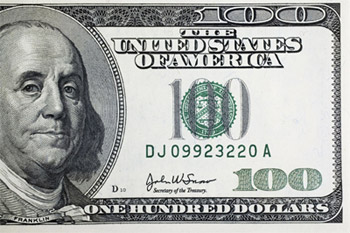I have been involved with organizations where less than 10% of employees completed an HRA and others where as high as almost 100%. If you believe that an HRA helps people change for the better then we definitely want to be over on the high end of participation.
Maybe we should get Congress to pass a law that makes an HRA part of our tax return? On second thought, the association may not be to our advantage.
In all seriousness, we need to get as many people as possible completing an HRA each year. It is definitely harder for all of us to ignore some of those common health behaviors if we are faced with them as part of a regular process.
As wellness people we definitely want as many people as possible filling out an HRA each year – particularly if we can make it a “wow“ experience for them! This means you have to have a well-designed “campaign approach” to completion of the HRA each year- often taking particular advantage of open enrollment periods and benefit linkages.
Here’s some additional strategies you can use to get those HRA completion rates as high as possible.
Strategy #1 – message your population frequently about the importance of the HRA as a tool for health improvement. The basic messages should be that the HRA is a useful and important tool for health improvement and that it is important to your organization. Communicate the importance of the HRA!
Strategy #2 – publically plot out the completion rates during the HRA completion period. This strategy uses a “United Way” like approach with the thermometer graphic. Feed the completion rates back to the entire work force with a stated goal such as 90%. Visually challenge the population to complete their HRA!
Strategy #3 – link completion of the HRA to a health management process including preventive screening. If the HRA is completed as part of a health assessment and the data is brought together to strengthen its utility to the individual you will frequently get higher completion rates. This can also be linked to a graphic showing the status. Position the HRA as part of a more comprehensive testing process!
Strategy #4 – require completion of the HRA in order to participate in a significant premium reduction incentive. For example, waive a $100 a month health plan contribution for meeting several wellness criteria and have the completion of the HRA as a requirement for participating in the premium reduction. Use the HRA as a “ticket” into a premium reduction based wellness incentive!
Strategy #5 – require completion of the HRA in order to continue health plan coverage. Use an annual application process for continuation of health plan coverage that requires completion of an imbedded HRA. Require completion of the HRA to continue health plan coverage!
Strategy #6 – require completion of the HRA as part of the application to access a Section 125 Cafeteria Plan. Employers are free to require completion of an application for access to flexible benefit choices as part of open enrollment. Instead of limiting it just to the health plan this strategy links it to access to all flexible benefit choices. This way even those who waive their health plan coverage will need to complete the HRA. Link the HRA to access to cafeteria or flexible benefits!
Strategy #7 – link completion of the HRA to a reward of one, two or three additional Paid-Time-Off (PTO) days. Calculate the total number of annual PTO days so that these “Well Days” are included in your overall standard. If the employee completes the annual HRA they receive the additional PTO days. Reward HRA completion with additional PTO days!
Next week we’ll look at how to get your HRA vendor to make needed improvements…..or how to get a new vendor!
Don’t forget, strategies for effective use of HRAs are one of the key skills we teach in our Level 1 WellCert worksite wellness certification program!


Larry
Great suggestions on creating HRA engagement! I think the big challenge raising the status the tool has (as you pointed out previously). For too many organizations it’s low-cost commoditized component of their program so participation is low and the data lacks validity.
I hope to hear from success stories from some vendors or perhaps a carrier. Like any program if you don’t really sell or support it the impact will be limited.
Philip
Hi Philip,
Thanks for your comment! I totally agree. I am afraid we have taken our eye off the ball and forgotten to follow through with efforts that can spell ultimate success or failure. In our consumer sensitive culture we can’t afford to ignore the fine tuning and user experience aspects of an HRA experience. I believe that also applies to our entire wellness program. For your info we are now collecting information like this on the HRA industry and will be sharing that in future posts. Best of luck to you!